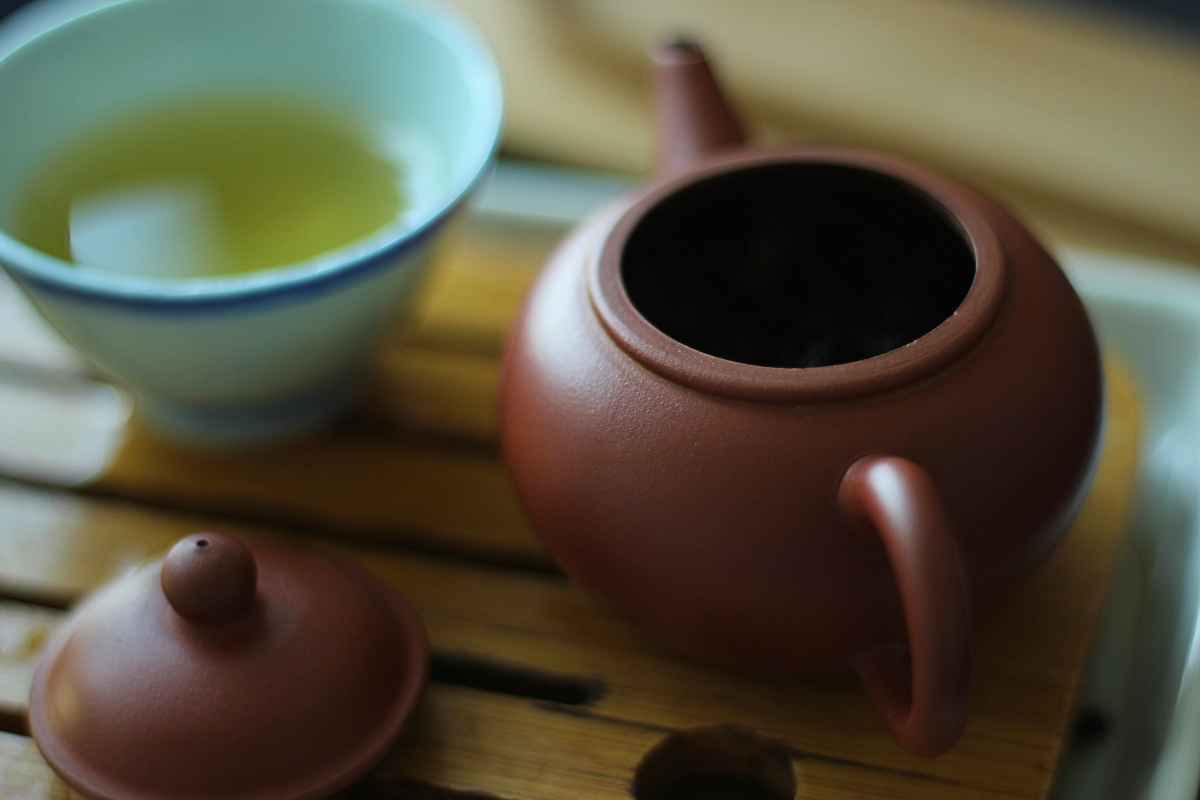The 2017 Qianliang Little Cubes from Exquisite Leaves is a post-fermented dark tea (or Heicha | 黑茶) from Anhua County in Hunan Province, China. It’s processed differently than your traditional and more popular Puerh tea, which makes it interesting to taste. This particular sample is from 2017 and is an example from Huajuan Tea (or Patterned Roll Tea). This implies that the tea is “compressed into log shapes and wrapped with vegetal layers” (source). The ‘Qianliang’ in the name simply refers to the fact that this variety is the biggest version of Huajuan teas.
Want to read about a horizontal tea session of two Long Jing teas? Read about the differences between Long Jing West Lake and Long Jing Ming Qian.
2017 Qianliang Little Cubes
This particular batch is from 2017 and comes from Huangyangping in Anhua County. The sample I received was one cube of around 7,5 g and this is what I used during the session. Qianliang tea is only one of the different varieties of Anhua Dark Tea (安化黑茶). The three main categories that offer the highest quality of Anhua Dark tea are: Heizhuan (Dark Brick), Huajuan (Patterned Roll) and Tianjian (Heavenly Tips). As mentioned above, Qianliang is an example of Huajuan tea. During processing, there are some steps that give this tea its specific flavour profile. The most important aspect is smoking the leaves over a pinewood fire. If you taste or even smell the leaves, you can easily distinguish this particular aroma.
Very tightly compressed brick with both leaves and stems. Khaki tints of green.
Once the leaves have opened, it’s all kinds of green colours and some browns here and there.
Tea Tasting
- Water 99°C
- 1 cube (+/- 7.5g) for a 130 ml porcelain teapot
- 1 rinse
- 6 steeps
Smell dry leaves
Light smell of smoked pinewood. Some unsmoked wood as well. Very subtle sweetness.
Smell wet leaves
The wet leaves have an aroma of stony minerality.
Steeping
Steep 1 (15 sec): the leaves have not opened yet. The beginning is mineral and even a bit stony. In the middle, I’m getting light notes of smokiness and pine resin. Once the stony flavours are gone, it’s mainly smokiness.
Steep 2 (20 sec): the leaves have opened up more now. The liquor is a tiny bit darker as well. At the start, I’m getting smoked pinewood. This flavour develops into light notes of pine resin.
Steep 3 (25 sec): the cube has fully opened now. Stony minerality followed by subtle notes of pine resin. The smokiness from the earlier steeps is less dominant now. I’m also getting a subtle sweetness and a sweetness in the aftertaste.
Steep 4 (30 sec): pleasant pine resin and very light hints of smokiness. Nothing too intense. The aftertaste also has a light sweetness to it.
Steep 5 (35 sec): the pine resin is not as dominant anymore. I’m getting a very light minerality at the beginning followed by a sweetness. The flavours are a bit melon-like.
Steep 6 (40 sec): light pine resin followed by a certain sweetness. Enjoyable to drink. It’s these weird combinations of different flavours that make this tea interesting!
Conclusion
I enjoyed drinking this tea! The earlier steeps were more focused on the smokiness and on the notes of pinewood, even some pine resin here and there. The later steeps had a certain sweetness that is difficult to pin down. It’s a bit like melon but not completely. The minerality of some steeps was a nice bonus to the already delicious flavours. If you’re looking to try something new and unusual, this is the tea for you! The weird combination of these flavours seems to work quite well.
Interested in buying this tea? You can use this referral link if you want. I will receive a small discount for any future purchases I do if you choose to use this link.




